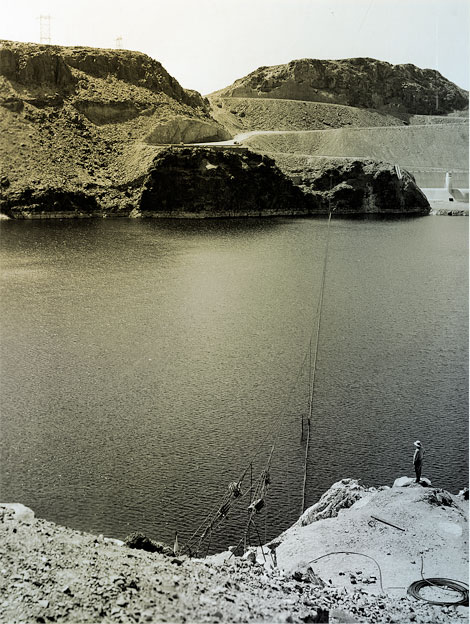

Without a doubt, Reclamation's biggest contribution to the state (and the nation) during this decade was the incredible support its facilities (especially Hoover Dam) provided to the war effort. During World War II, the Bureau of Reclamation provided power to defense plants, water to grow food, and, indirectly perhaps, provided supplies (via Phelps Dodge's construction of Horseshoe Dam) such as copper. This decade also saw the beginnings of environmental changes, as the Salt River Project began cutting down trees along the canals and the classic zanjeros gave way to more modern monitoring of the water orders and deliveries. The development of air conditioning foreshadowed the booming population of the state and the Colorado River Compact was finally signed, leading the way for Central Arizona Project planning (1947-49).
PEOPLE
Gila Homesteaders Take Over
On the sun-parched Yuma Mesa of the Gila project in southwestern Arizona, homesteaders are making irrigation history. Unlike their forefathers who carved homestead from raw land, the Yuma Mesa settlers are moving onto farms already under cultivation and producing crops.
During the war, the Bureau of Reclamation was authorized to level the mesa land, construct farm ditches, fertilize and seed the soil to ... more
 May 1940 photo showing cable across Lake Mead and security fencing. Reclamation photo.
May 1940 photo showing cable across Lake Mead and security fencing. Reclamation photo.World War II transformed central Arizona and the Phoenix area. Copper mining again thrived because of the need for the metal in the war effort. The Phelps Dodge company needed water for its copper mining operations, and the Salt River Project worked with them to build Horseshoe Dam on the Verde River. The dam would be a benefit to the private company and to Arizona's residents for its water storage capabilities.
The partnership between Reclamation and the states of Arizona and Nevada had an even bigger impact on the war effort through the production of power at Hoover Dam.
PROTECTING HOOVER DAM
Even before the December 7, 1941, attack on Pearl Harbor, which marked the United State's entry into World War II, Washington worried about the safety of America's high-profile, power-generating dams. Tension and intrigue filled the period leading up to World War II.
On the evening of November 30, 1939, the State Department received word from the U.S. embassy in Mexico of an alleged plot to bomb the intake towers at Hoover Dam. The plot by German agents, discovered in Mexico City, hoped to paralyze the aviation manufacturing industry located in Los Angeles by cutting off their main source of electricity.
The State Department immediately contacted Reclamation Commissioner John Page and advised that all navigation on Lake Mead, particularly near the dam, should be suspended without delay. The State Department instructed Page to keep all information regarding the plot highly confidential. They did not want the information to reach the public or the press. Reclamation instantly banned all private boats ... More
